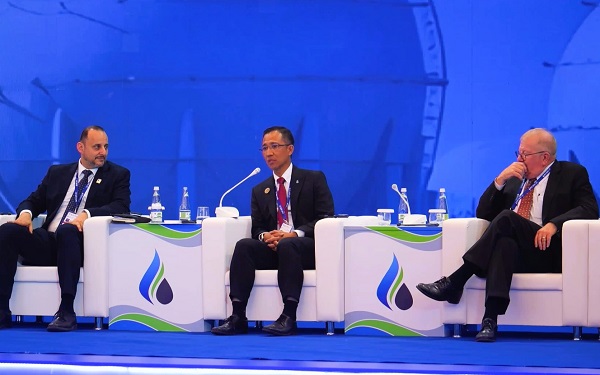Block 1 in the Turkmen sector of the Caspian Sea possess large hydrocarbon resources that require investment for further monetization, a conclusion drawn from the remarks by Ismadi Bin Ismail, Chief Executive Officer of PETRONAS Carigali (Turkmenistan) Sdn Bhd, during his address at the “Raw Materials as the Foundation of the Energy Transition” session at the International Conference “Oil and Gas of Turkmenistan 2025” (OGT 2025) in Ashgabat.
Resource Potential
Ismail stated that PETRONAS Carigali has “very large plans” in Turkmenistan, particularly concerning Block 1.
He provided the exact figures for the block’s resource base:
- 7 trillion cubic feet (TCF) of gas.
- Approximately 200 million barrels (MMbbl) of liquid hydrocarbons.
Ismail emphasized that all these resources need to be monetized and invested in. He clarified that the immediate development of the entire volume is not planned, but the company is already actively working at the West Diyarbekir field (part of Block 1) and plans to develop other fields in the future.
Directions for Monetization
The CEO of PETRONAS Carigali highlighted three key areas that need to be developed for the effective monetization of these resources and called for cooperation from service providers:
- Gas monetization.
- Reducing the investment payback period.
- Translating the project into greater benefit for Turkmenistan.
Looking Ahead: New PSA
The company places high hopes on the new Production Sharing Agreement (PSA) for 25 years (2025-2050), which is expected to bring significant benefits to Block 1. PETRONAS also expressed hope for the possibility of exploring other blocks in the Caspian.
Earlier in September, at the Turkmenistan Investment Forum in Awaza, it was announced that over 29 years of activity, PETRONAS has invested a total of $11.64 billion in oil and gas operations in the country. Cumulative production amounted to 134.43 million barrels of liquid hydrocarbons and 1,568.55 billion standard cubic feet of gas.

